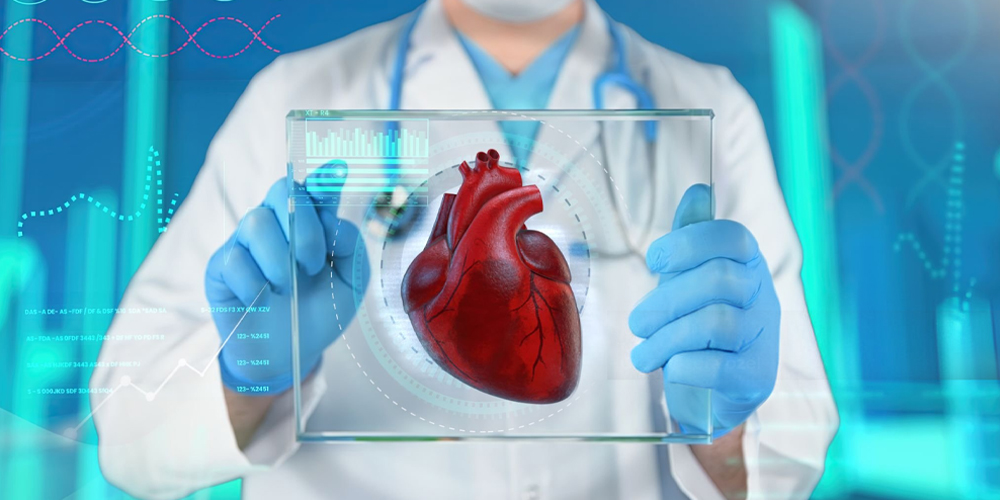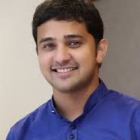About Electrophysiology
Cardiac electrophysiology is a discipline that explains the problem of rhythms and their treatment. Electrophysiology has been marked by various advancements in the diagnosis and management of cardiac arrhythmia. Being one of the best hospitals in Patna, the Department of Electrophysiology at Divanaya Health is well-equipped with vibrant and skilled electrophysiologists who perform electrophysiological studies using advanced technology and the latest treatments to treat cardiac arrhythmic conditions..

Why Choose Us?
At Divanaya Health, led by the esteemed Dr. B.B. Bharti, we provide exceptional electrophysiology services in Patna. With 20 + years of experience, Dr. Bharti and his dedicated team utilize advanced techniques to diagnose and treat heart rhythm disorders effectively. Our commitment to personalized patient care ensures that every individual receives tailored treatment plans for optimal health outcomes. Choose us for compassionate, expert care in a supportive environment.
Symptoms of Arrhythmia
Arrhythmia is a condition in which the cardiac rhythm of the heart changes. As a result, it may become too slow, fast, uncoordinated, or irregular. Further, it results in palpitations, breathlessness, light-headedness or syncope, anxiety, fatigue and rarely cardiac arrest (sudden death)..
Types of Arrhythmia
Bradycardia
A slow heart rate or bradycardia occurs due to delay or blockage of the heart conduction pathways. A mild form may require no treatment compared to severe bradycardia, which may need the implantation of an electrical device termed a pacemaker within the heart.
Tachycardia.
Tachycardia is a rapid heart rate due to ventricular tachycardia or supraventricular tachycardia. Mild forms do not require treatment. However, severe tachycardia often needs medical therapy to slow the heart rate. If not managed with medications, it may require a radiofrequency ablation procedure to correct the problem. Alternatively, some patients with ventricular tachyarrhythmias may require an implanted defibrillator to restore the heart rhythm.
When to see a Cardiac Electrophysiologist?
People who are experiencing the following must immediately seek medical attention; they may then be referred to a cardiac electrophysiologist for further investigation:
- People experiencing heart palpitations, light-headedness and fainting.
- Have abnormal heart rhythm, either slow or fast on ECG
- A person with atrial fibrillation on EKG
- A person who has survived sudden cardiac arrest
- A patient with low heart function who might benefit from a combo device to improve heart function or an implantable cardiac defibrillator to prevent sudden death
Diseases Treated by Cardiac Electrophysiologist
Cardiac Electrophysiology and Pacing specialists look after patients having difficulty with heart rhythm and electrical signalling. An electrophysiologist manages conditions such as:
- Bradycardia: Slow heartbeat-like heart blocks and sick sinus syndromes
- Supraventricular tachycardia, atrial tachycardia, AV nodal re-entrant tachycardia, AV re-entrant tachycardia, and Wolff-Parkinson-White syndrome
- Ventricular arrhythmias - ventricular fibrillation, ventricular tachycardia
- Syncope
- Heart Failure patients for cardiac resynchronisation therapy
- Cardiac Arrest survivor
- Familial arrhythmia syndromes such as arrhythmogenic right ventricular dysplasia, early repolarization, Brugada syndrome, catecholaminergic polymorphic ventricular tachycardia, hypertrophic cardiomyopathy, idiopathic ventricular fibrillation, long QT syndrome, and short QT syndrome
- Postural orthostatic tachycardia syndrome
Diagnosis & Test Recommended by Cardiac Electrophysiologists
Apart from advising the standard diagnostic tests, electrophysiologists recommend the following tests:
- Electrocardiogram: This quick and painless test measures the heart's electrical activity. During an ECG, sensors are placed on the chest, arms, and legs. Some latest personal devices like smartwatches also can monitor heart activity but are not as accurate as EKG.
- Holter monitoring: Continuous monitoring of the heart rhythm can be done using this portable device for upto 3 days.
- Event monitoring: Event monitoring is advisable when long-term heart rhythm needs recording.
- Cardiac magnetic resonance imaging (MRI): This test helps assess cardiac structure abnormalities that may be responsible for arrhythmias.
- Electrophysiological (EP) testing and mapping: This test, also called an EP study, helps patients with slow or fast heart rates, confirm the diagnosis, and helps in treatment planning.
- Tilt table test: This test helps patients with syncope.
Key Advantages of Arrhythmia Services
Arrhythmias can significantly impact an individual's quality of life and, in some cases, pose serious health risks. Effective management through EP and Arrhythmia Services is essential in providing patients with the best possible outcomes. It not only helps alleviate symptoms but also reduces the risk of complications associated with irregular heart rhythms, including stroke and heart failure..
In conclusion, Electrophysiology and Arrhythmia Services are at the forefront of diagnosing and treating disorders related to the heart's electrical system. Through a combination of advanced diagnostic techniques and specialized interventions, EP specialists play a crucial role in preserving heart health and improving the quality of life for individuals affected by arrhythmias. With ongoing advancements in technology and treatment modalities, the future of Arrhythmia Services holds great promise for further enhancing patient care and outcomes.
Book an AppointmentWhat Our Patients Say
Read heartfelt testimonials and experiences from our patients, showcasing the exceptional care and compassionate service they received at Divanaya Health (Heart Cure).



![]()
Dr. B.B. Bharti is one of the best cardiologist in patna, Bihar. He is highly skilled, experienced and a down to earth person as well. My Grandfather has been in his consultation and supervision since 10 years. He is the best one can ask for.



![]()
One of the best cardiologist in Patna! if you want better treatment pls do make a visit here! you will definitely get best results!!



![]()
Dr. Bharti is only one the person in Bihar those who save any critical Heart patient.... Thank you sir for every help 🙏🙏🙏🙏



![]()
Dr B. B. BHARTI is a very good Doctor. All family members of this hospital are very helpful and good behavior. 1



![]()
Finest cardiologist and great human being. Though clinic was crowded but it was managed well. Proper covid 19 safety rules were followed.


![]()
Dr B.B.Bharati, a great doctor, who always standby the person in need , as patient or any way, May God bless you all blessings of mine.
